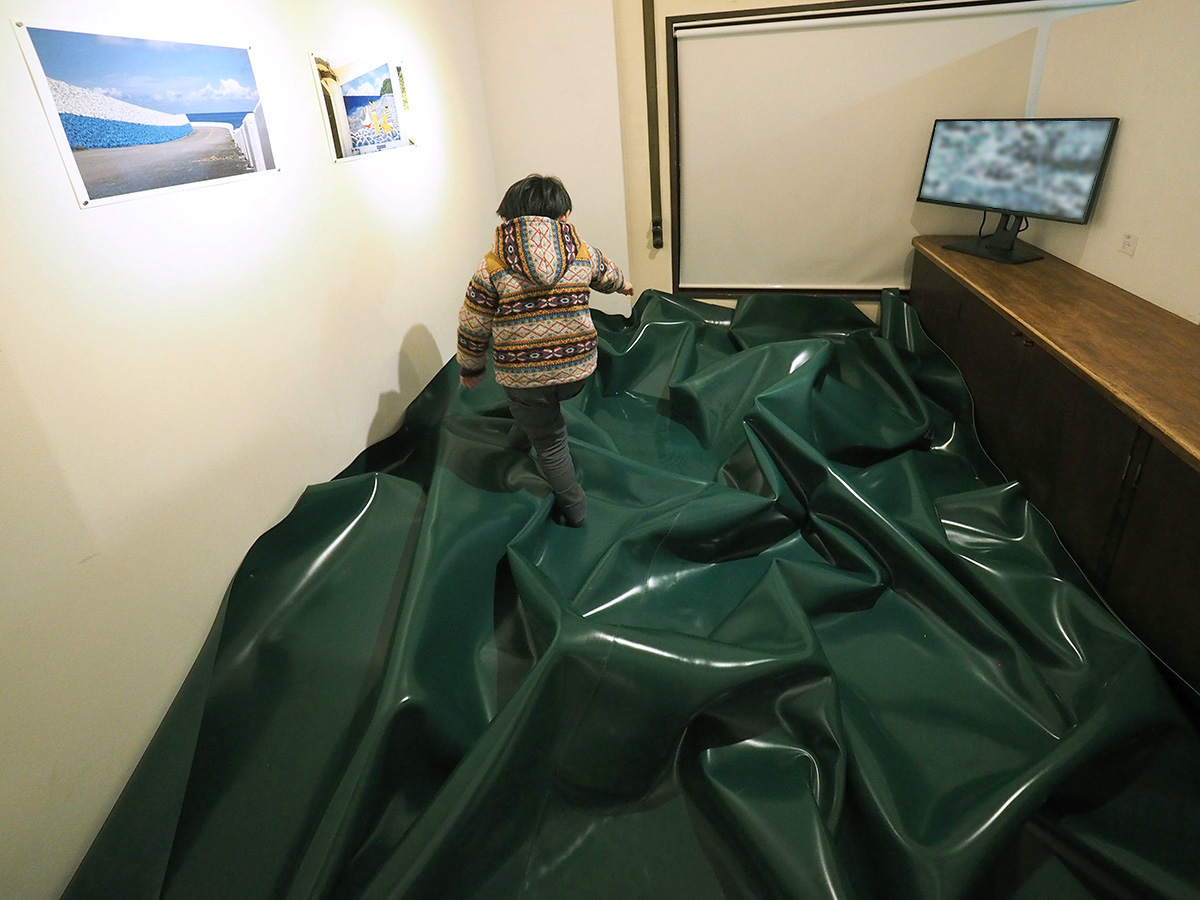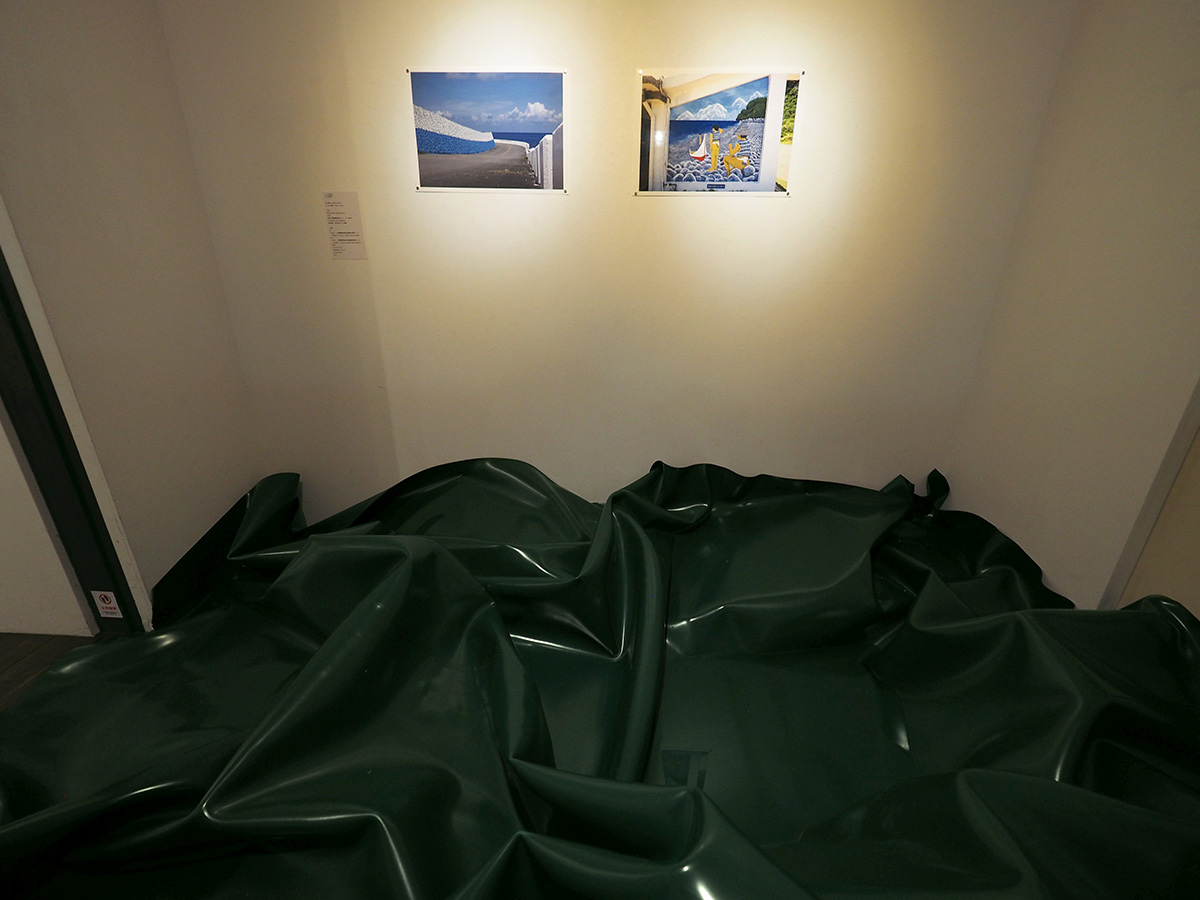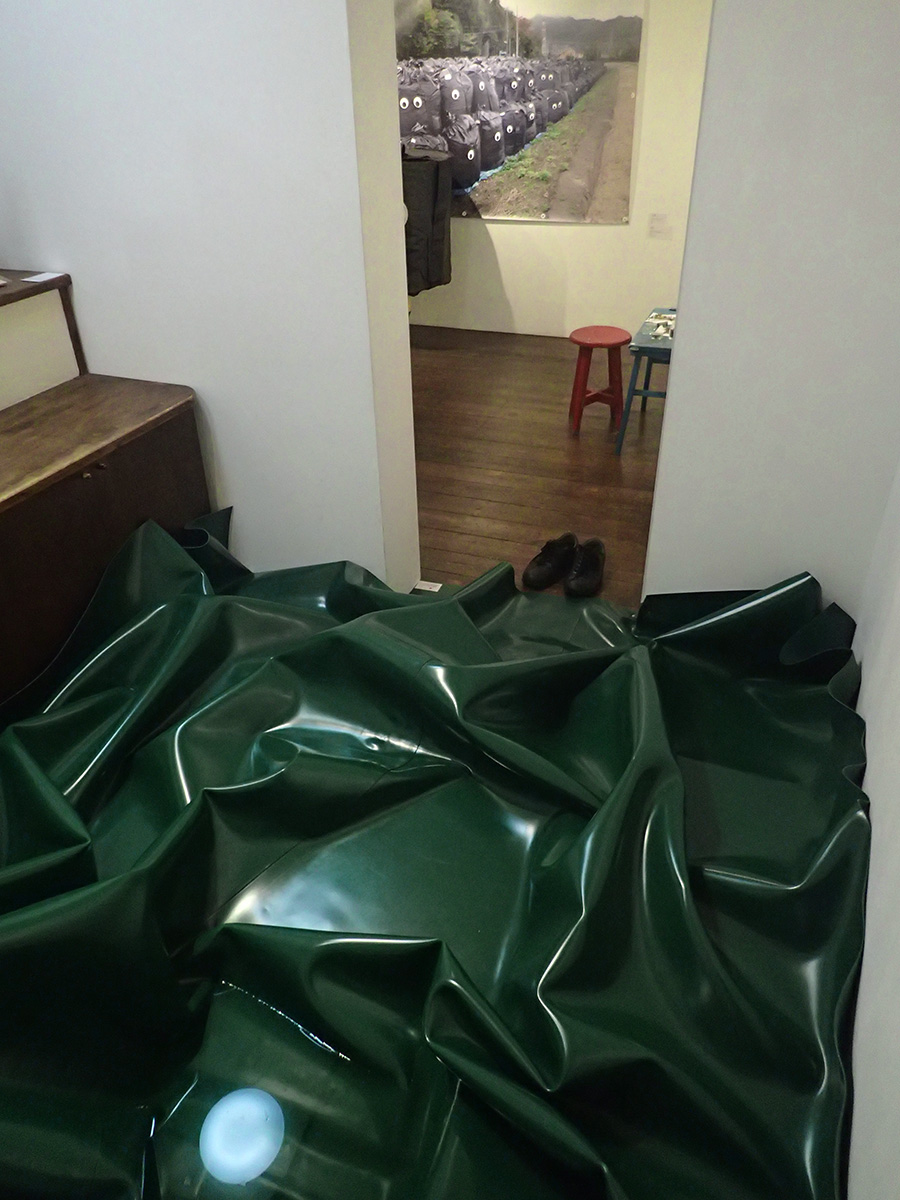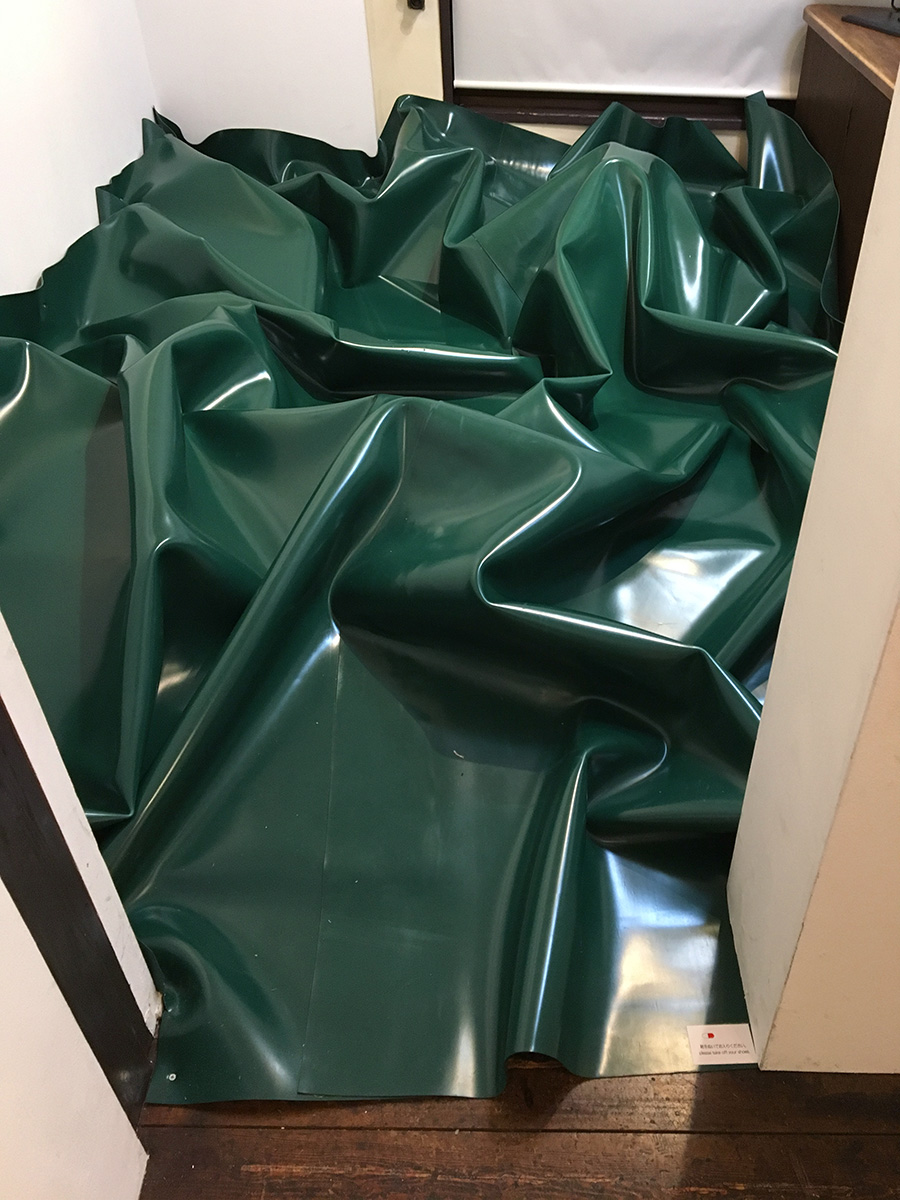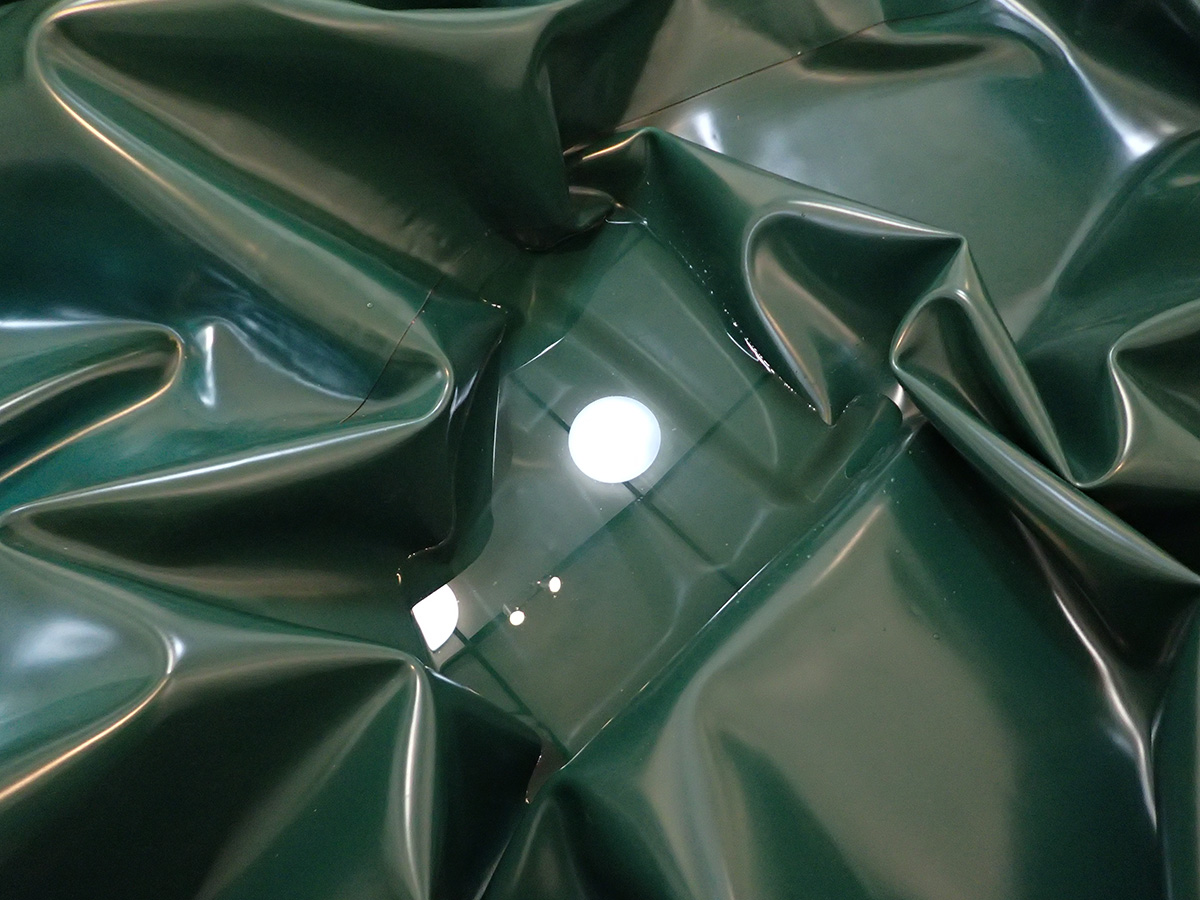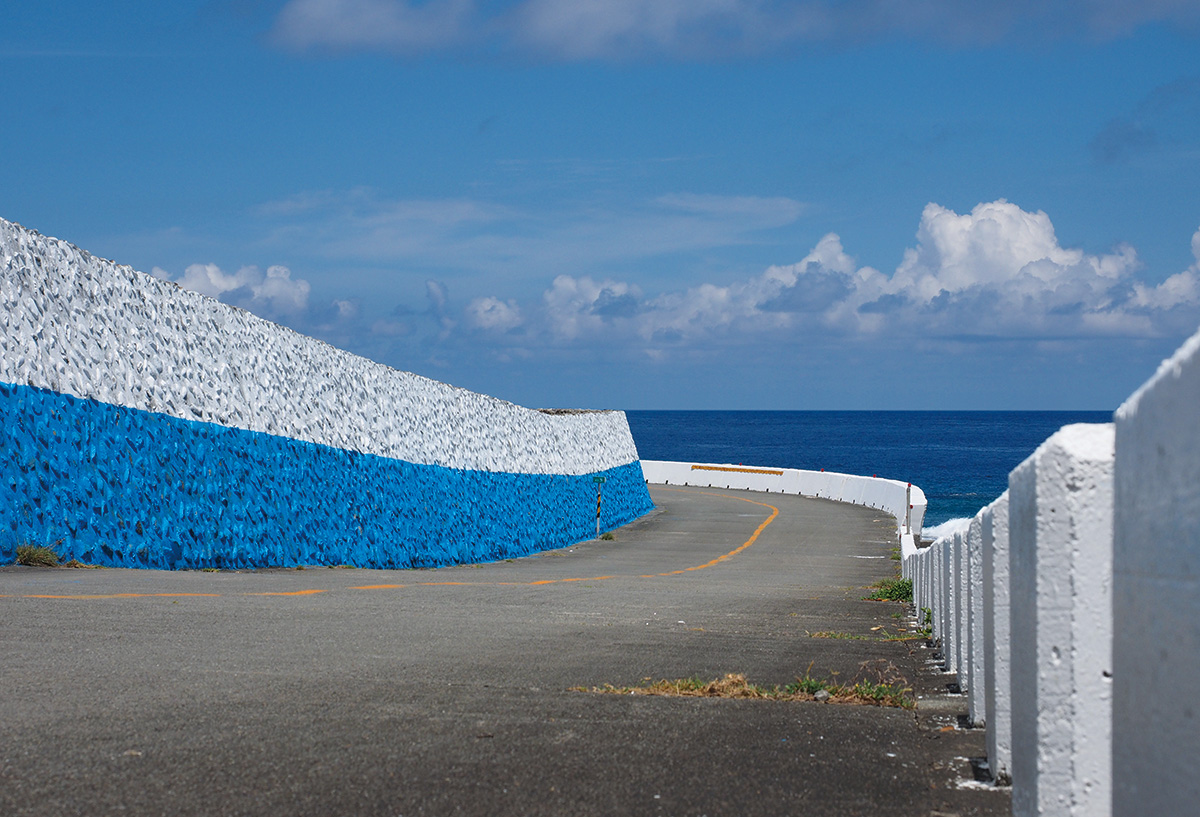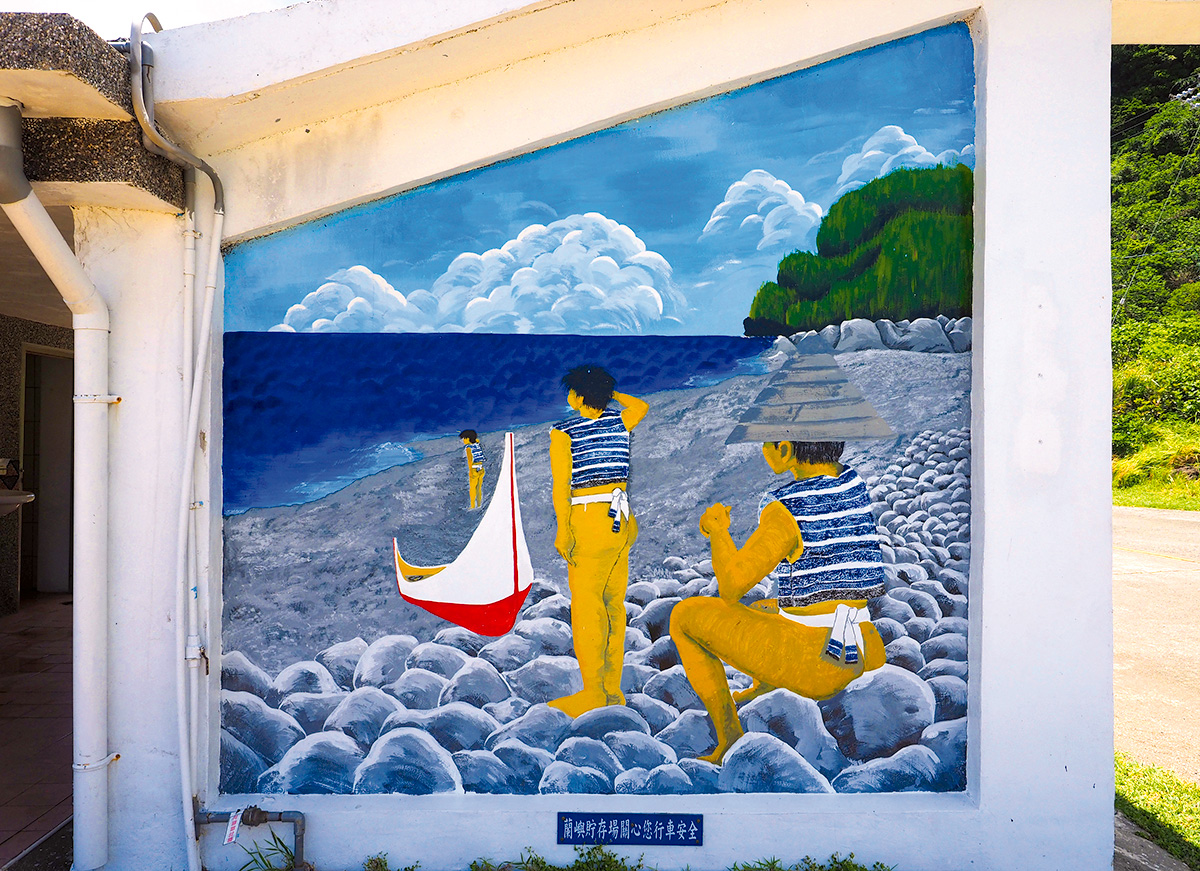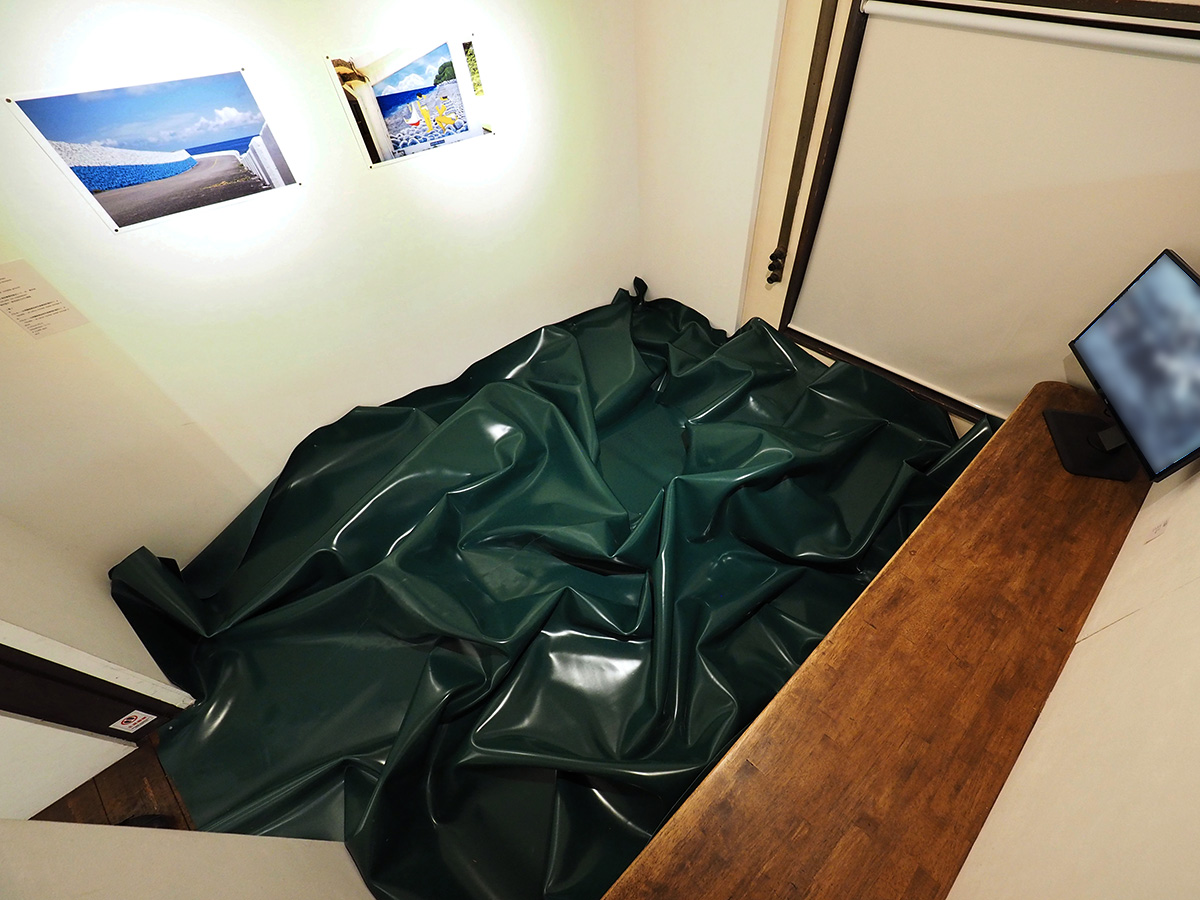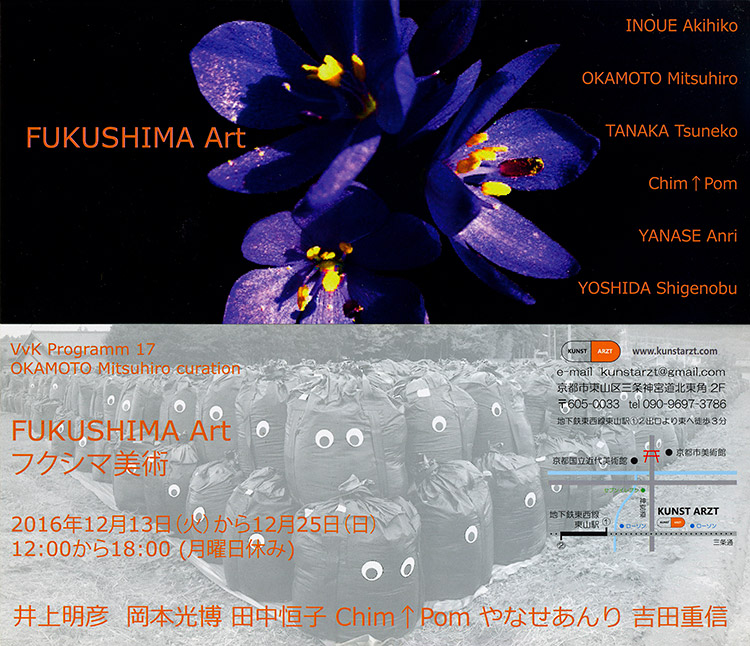Three Horizons 三本の水平線
Three Horizons
[floor]
"Invisible Ground"
water shielding sheet for storage area of radioactively contaminated soil, water, wood
dimension variable,
2016
[wall]
"Parallel -at Lanyu nuclear waste storage A"
"Parallel -at Lanyu nuclear waste storage B"
inkjetprint,
329x483mm,
2016
FUKUSHIMA Art
curation: Mitsuhiro Okamoto
Decwmber 13 - 25, 2016
KUNST ARZT, Kyoto
三本の水平線
[床]
"見えない大地"
汚染土壌仮置場用遮水シート、水、廃材,
2016
資材協力:株式会社エルヴェ環境
[壁]
"パラレル:台湾蘭嶼島放射性廃棄物貯蔵場にて_A"
"パラレル:台湾蘭嶼島放射性廃棄物貯蔵場にて_B"
インクジェット・プリント,
329x483mm,
2016
「フクシマ美術」
キュレーション: 岡本光博
2016年12月13日(火)〜25日(日)
KUNST ARZT, 京都
Curator/Artist Mitsuhiro Okamoto says that the word FUKUSHIMA has not yet lost the potential to generate artistic reactions.
"Three Horizons" consists of two parts; on the floor, "Invisible Ground", on which one can walk on the bumpy ground of wooden mountains covered with water-shielding-sheet for the storage area of radioactively contaminated soil of Fukushima. There is one "lake" filled with real water which makes a small horizon on the rough ground.
And on the wall, two photographs of see-scapes of the nuclear waste storage facility at Lanyu Island of southeastern Taiwan. Lanyu Island or Orchid Island is land of the Tao aborigines, so also called "Ponso No Tao" and in 1982, Taiwan Power Company built the nuclear waste plant at the southern tip of this remote island. In the photograph, there are two horizons, real one and painted one on the wall of the restroom.
3 horizons gathered in the exhibition space connect three lands quite far from each other, FUKUSHIMA, Lanyu and Kyoto.
「三本の地平線」は、キュレーターの岡本光博がいう「フクシマ」という語のもつポテンシャルに呼応して制作されたインスタレーションである。
2つのパートからなる。
床の『見えない大地』は、福島の大地の起伏を示唆する凹凸に富んだ木製の地面の上を、現地の汚染土壌仮置場にかぶせられる緑色の遮水シートが覆う。皺は展示室の床よりシートが大きいために自然に生まれた皺である。凹んだ部分の一部には実際に水がはられ、湖を示唆する。人は靴を脱いで上を歩くことができる。
壁面の2点の写真『パラレル』は、台湾南東部の蘭嶼(らんゆう)島の海辺につくられた放射性廃棄物貯蔵所付近の風景であり、それぞれ水平線が強調されている。一つは太平洋のリアルな水平線であり、他方はこの島の原住民であるタオ族が描かれたペンキ絵の中の水平線である。台湾本土から離れた蘭嶼島には、1982年に台湾電力の原発の放射性廃棄物の貯蔵所がつくられた。
水はどこでも水平線をかたちづくる。
展示空間に現れた三本の水平線が、遠く離れた福島と蘭嶼、そして京都をつなぐ。
![]() research リサーチ(Lanyu and Fukushima)
research リサーチ(Lanyu and Fukushima)
